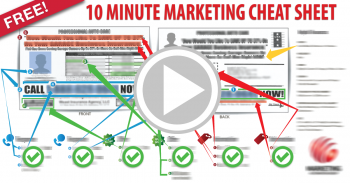Category Archives for Mindset

A Powerful Lesson From My Mentor
Years ago, I learned something from my mentor that
has proven to be more valuable than most other things.
I’ve used this specific thought process to ‘fix’ many
businesses and get the cash flowing again rapidly.
Here’s this nugget of wisdom in it’s simplest form:
The amount of money you make is in direct proportion
to the number of offers you make.
That’s it, simple, yet profound.
In every instance, in every situation when I start working
with a client that isn’t hitting their revenue goals, all I
need to do is evaluate the number of ‘offers’ they are
making on a daily, weekly, monthly basis and right there
I find the problem.
So if you’re finding that you’re not hitting the revenue
numbers you’d like, ask yourself (and be brutally honest)
‘how many times a day am I making an offer to someone?’
Are you on the phone asking people for their business?
Are you running webinars to promote and sell your services?
Are you doing live presentations?
Are you emailing people asking for their business?
What are you doing to make an offer?
See, when you make an offer there’s only 2 things that can
happen, 2 and ONLY 2.
1. They can say YES, I’ll take it.
2. They can say No.
But even the ‘No’ will often times turn into a ‘yes’ later on
IF YOU’VE MADE THE OFFER IN THE FIRST PLACE!
Of course NONE of this can happen if you don’t make the
offer.
So today’s lesson: Make a SHITLOAD of offers, and you’ll
make a ton of money.
Being a man that practices what he preaches, I’ve got an
offer for you. Right now I’m offering to do no charge
strategy sessions for REAL business owners who are doing
more than 100k a year in sales and want to get to the 100k
a month level and beyond.
If you think you’re ready for some no nonsense, clear thinking
go ahead and sign up for a strategy session with me by clicking this link.
I look forward to talking with you.
Yours in profit,
– Bob
P.S. Clear thinking is responsible for more business success than
everything else combined. If you’ve become clouded or ‘stuck’ in
your business, then a strategy session with me might be the
exact thing you need to get ‘unstuck’ and moving again. Click here to schedule yours now.
The Power of FOCUS
 If there’s one thing that I can say is the single biggest factor to a person’s success- it’s their ability to FOCUS.
If there’s one thing that I can say is the single biggest factor to a person’s success- it’s their ability to FOCUS.
A few years ago I learned that the word FOCUS is an acronym meaning: Follow One Course Until Successful.
This may sound easy, but in reality I’ve found it to be very difficult, especially when it comes to building your business.
In any given business, on any given day, there are just too many things to focus on, too many things pulling you in all different directions. Things like accounts receivable (getting paid), accounts payable (paying bills), employee or contractor management, product development, fulfillment, customer relations, brand messaging, payroll, cash flow management and many, many more… And yet none of these activities, all demanding your attention, address what Michael Gerber identified as the most important. None are working ‘on’ your business. They are all working ‘in’ it.
This is where the power of FOCUS comes in. If you want to rapidly scale your business from 6 figures a year to 7, you must focus on the activities that build your business, not just manage it.
What are some of those things?
My favorite, and I believe the most important, is marketing. As I define it, marketing is everything that causes a potential customer to notice you and causes them to want to choose your business over anyone/everyone else.
I’d like to say that until a business has figured out how to attract a constant and predictable flow of high quality customers, ready to do business with you, you shouldn’t be focusing on anything else. Sure paying the bills has to get done, as do many of those other ‘in your business’ activities, but none really matter until you’ve got loads of people waiting to give you their money.
FOCUS on that first, and keep at it until you’ve achieved that goal and I guarantee you’ll have a 7 or even 8 figure business very soon.
If FOCUS is a challenge for you, and you’d like specific, and proven marketing methods, strategies and tactics that deliver top quality customers to your business 24/7, then you’ll want to get your hands on my Automated Entrepreneur program right away. You can learn more proven FOCUS techniques and killer marketing strategies on my webinar, that you can attend for free, just register here.
Yours in Profit,
Bob
Viral Video: How You and the Internet Can Damage Your Small Business
 Effective use of internet marketing is great for your business. But when you get caught off guard—a bad business moment can go viral.
Effective use of internet marketing is great for your business. But when you get caught off guard—a bad business moment can go viral.
Earlier this year, a bystander caught a Miami doctor behaving badly on video. The incident involved an Uber driver, and questionable choices made by the doctor. Although the doctor eventually walked away from the incident, she couldn’t walk away from the internet furor left behind.
Since then, the young doctor was placed on leave from employment with the Jackson Health System. She states she didn’t realize the incident would be such a big deal and has hired an attorney, and a public relations firm, to try and salvage her reputation—and her job.
This incident is just the latest in a long string of viral moments captured by not-so-hidden cameras. Cellphone cameras are everywhere, and both photos and video capture the foods people eat, as well as their foibles during the business day.
As a business growth authority, I work with small business clients to help them increase revenue, develop their brand—and take home more money. I talked recently about how to turn the tables on negative internet comments, but now I am going to talk about making sure some of those negative comments never happen.
Best time for reputation management? Before you have a problem
A couple of years ago, singer Dave Carroll sat on a United Airlines airplane as baggage was being loaded onto the plane. To his dismay, he saw his custom guitar being tossed through the air by baggage handlers. On landing, he discovered, as he suspected, that the guitar was broken, costing him about $1,200 in repairs. In the span of a year, United Airlines dodged his calls, and refused to make good.
For closure, or maybe for openers, Mr. Carroll created and posted a YouTube video describing his experience with United Airlines. Within two days of posting, the video had 24,000 hits. Today, over 15 million people have viewed the piece. United Airlines contacted Mr. Carroll and hopefully took care of the claim. And today, the video keeps right on describing the poor service received by Mr. Carroll.
The best advice for handling a claim like this? Don’t let it happen in the first place. Viral videos frequently make headlines. While you can respond to negative comments, you cannot scrub your internet reputation clean—ever.
Consider these points to help avoid brand damaging moments enshrined forever on the internet:
- Reputation management: If you are a solo entrepreneur, you are your brand and reputation manager. If your shop is slightly bigger, you could hand reputation management over to your web services people, or HR. No matter who does it, stay on top of media mention of your business on the internet. It is easy to do – just set up a free Google alert that will send you an email if your name is mentioned. Whether positive, or negative, you have the opportunity to know when you, or your business, are making news.
- Training, training, training: In a consumer-centric economy, personalization is key. That means more than the use of your CRM, but careful in-person relationship management. When you onboard an employee, be sure they know how to handle unhappy customers, and how to refer the customer to a manager. When a customer is upset with a product or service, training should be in place to ensure the customer is greeted, and their grievance aired—by stepping aside, or into an office or private (but visible) area. Offer employee training on how to de-escalate a situation, and empathetically respond to clients who feel slighted. And there will always be customers who feel slighted.
If you encourage employees to post about their workplace on social media, it requires training. Creating positive buzz about your job environment is a plus, if it is done right. Be sure your employees know what is appropriate—and inappropriate—to post. Aim for positive—and if your employees are not happy, find out why and try to remedy it.
- Assume the camera is there: We are all on camera. It could be a security camera, it could be someone’s phone. We live in a reputation economy that is rapidly blurring the lines between private and personal actions—you are your brand. In a parking lot, grocery store, or in line at the ballgame—if you lose your cool, it is going to be captured on camera forever.
Customers are sometimes unhappy, and post negative things on social media. You can handle that. But when you adopt an overall policy of excellent customer and client service—such issues are a lot less likely to happen.
When you need the marketing automation, and business plan, to break through the small business revenue ceiling, I can help. Call me at 585-633-7563 today.
Yours in profit,
Bob Britton
The “Hidden” Mindset That Holds You Back
 In my many years of working with business owners & entrepreneurs, there’s
In my many years of working with business owners & entrepreneurs, there’s
one thing that I’ve found destroys more dreams, crushes hopes and derails
success more than just about anything else.
What’s that one thing?
Victim thinking.
This problem is so pervasive and so insidious that the people who suffer from it
almost never fully realize the grasp it has over them.
And the opposite is true as well. The people who are most wildly successful
are the ones who don’t suffer from this alignment.
Let me share a story that I think illustrates this beautifully.
When I was first getting into marketing, I had a mentor and a coach. He was very
successful and had made millions. I was dead broke but ambitious. My mentor
told me I needed to develop a marketing piece that would consistently drive in new
business. He gave me some general guidelines but left the rest up to me to create
the offer, write & design it. Took me a couple of months of hard work but eventually
I had something I thought was pretty good. I sent it to him to critique and he gave
me a few suggestions and told me to let it rip. Excited, I spent money I didn’t have
and mailed out thousands of these pieces only to get virtually no response. I didn’t
realize it at the time but this was a pivotal moment for me. When I called my mentor
and told him of my failure, his response startled me and he said ‘that’s great’. Obviously
I didn’t feel great. I was deeply in debt and now a little deeper. When I asked why it was
‘great’ he said because ‘you found something that didn’t work so now you’re one step closer
to finding one that does.’ Mentally this was a reach for me but thankfully I embraced this
way of thinking and I decided to keep testing and failing until I figured out what worked.
I’d like to say it was the second time, third, fourth or even fifth- truth be told I think it was
about the fifteenth. I say about because I quit counting and I focused all my attention on
cracking the code and finding success. And when I found success it hit like tidal wave. I ended
up creating a marketing piece that to date has sold over 100 million in services- it’s a whopping
success.
But here’s the most important part of this- it was very tempting to say to my mentor,
after my failures, ‘aren’t you a marketing expert- you should know what works and give me the solution!’
this is what people suffering from victim thinking think & say. They fail, then they quit. And on to
the next thing looking for the solution. They blame the failure on someone else. They never put in the
effort to seeing something all the way thru to success. They are only committed as long as it’s easy
and effortless.
As a coach and a mentor now myself I’m keenly aware when someone has adopted this attitude
and is heading toward failure. When you’re fully committed to an outcome, you’ll find it no matter what.
This is why I have clients who become rich following my advice and others that have failed and quit.
In the end, it comes down to their attitude. Successful people realize it’s a process- a journey,
and they will not be denied. Victims blame others and everything else.
Let this be a reminder to never be a victim and embrace the mantra: if it’s to be, it’s up to me.
And get to work. Do that you and you will not be denied.
Yours in Profit,
Bob
***
360 Packetts Landing Fairport, New York 14450 United States (585) 633-7563
Turn the Tables on Negative Internet Comments
 When is a negative internet comment not such a bad thing? The answer—when you use it to your advantage.
When is a negative internet comment not such a bad thing? The answer—when you use it to your advantage.
I talked before about the importance of reputation management. For the small business owner, the word on the internet can make or break your business. You have to be on top of it. That means vigilance. While there are a number of tools to help you track comments made about your business or brand, Google Alerts is easy and free. If you are not using it—you should.
Let’s say you do all the right things. You are using CRM software, you have a great business plan, and a tight storefront with well-trained, engaged employees. Super. Things will never go wrong—right?
That is incorrect. No matter how well you run your business, there are going to be mistakes, a customer or client is going to get left out in the cold—and they are going to complain. Trust me. As an experienced small business owner, I know the pain of mistakes that just should not have been made.
Sometimes, though, there was no mistake. You just have an unhappy client, or someone trying to stir up trouble for your business. Does it happen? A lot.
Take advantage of a poor review
We already know that online reviews are important. People believe what they read, often without considering the credibility of the reviewer, or the circumstances behind a complaint. So let’s take a look at how to turn a profit on a bad situation:
- First rule? Do not ignore a complaint: Squeaky wheels get grease and a lot of play on the internet. Ignoring a problem, and hoping it goes away, is a fast way to lose money and hurt your reputation. Remember—people do not often question the credibility of someone who complains. So why respond to people who don’t have anything nice to say? Because you can use the exposure.
- Free publicity is not a bad thing—especially if it gives you a chance to look good. So look good. Because you are monitoring your online reputation, you know right away about the problem. Gather as much information as you can, but intervene quickly on social media. Respond to your accuser by owning the problem—and ask for more information. Do not create a reason for the error—just own it. “I understand you are unhappy about how you were treated, and I want to make that right.” Step up to the problem—absolutely, and quickly.
- Do not delete: Deleting a comment is possibly worse than ignoring it. It shows you saw it and are not taking action to address the problem.
- With bigger or business process problems, you are probably getting more than one complaint, and word spreads fast. Post a note on your website, or via social media, or tell customers you are aware of the problem and working to resolve it. After you have corrected the problem, take the opportunity to briefly discuss the problem, but take more time to talk about how you fixed it. Make it a case study in how to do things right. Add an apology and a discount, coupon, or other perk, to help your customers feel like they were part of the solution—instead of the problem.
- What if someone is targeting your site, or establishment, on social media? Your best defense is an honest response. If your attempts to resolve the problem or the complaint are rebuffed, use social media to show all you do for your clients. Restate the complaint you received, mention what you did in response, and how you offered to resolve their difficulty. The people you want as customers or clients will see and consider your response. They will also see the complainer as unreasonable if you did your best to respond in good faith.
You cannot please all of the people all of the time. But when you treat people who complain with respect, courtesy, and generosity, they usually respond in kind.
After you resolve the situation, take advantage of the feedback to take a hard look at what you could do to avoid a similar complaint or mistake. Complaints are just outside interests helping you troubleshoot your own business—take advantage of the information, and the opportunity.
As a small business owner, I know how to turn the tables on hard times to help you earn your first million. Get a super start on the New Year by attending one of my free webinars, or give me a call at 585-633-7563 today.
Yours in profit,
Bob Britton
Retaining Great Talent in a Tough Job Market
 As a small business owner, your employees provide the winning edge in a competitive economy. How do you hold on to talent that could be looking elsewhere?
As a small business owner, your employees provide the winning edge in a competitive economy. How do you hold on to talent that could be looking elsewhere?
For more than five years, the job market has undergone change. Severe contraction during the Great Recession threw a lot of people out of work, and many small business owners had a tough time staying afloat. Entrepreneurs that did hire enjoyed a deep talent pool available at rock bottom prices.
Today? Not so much.
As the economic engine heats up, more jobs are created and labor markets are tighter. Early in 2015, small business owners stoked a five-month trend of job creation, snapping up talent, and struggling to hold on to key employees who drive their profits.
By November, that trend slowed, but a National Federation of Independent Business (NFIB) survey reports more than 55 percent of small business owners are still trying to hire for positions where there are few, or no, qualified applicants.
With the shoe on the other foot, small business owners have to find new ways to hold on to employees who could be at risk of being hired away.
I talked earlier about why it is important to keep your employees engaged. Now we’ll talk about ways to do it.
Seven tips to keep valuable small business employees on board
So how do you keep your best employees working for you—and not your competitor?
Engagement is a great but overused word. You put time, energy, and money into training the people you hire. Depending on your business, that could mean specialized training, an emphasis on service skills—or whatever combination keeps your business humming.
It used to be easier to hire and keep good talent. Switching jobs every two years, or even every year, looked bad on a resume. Today, steadily switching out one job for the next is a routine way to gain benefits, better working conditions, and higher income. For talented employees—it works.
Many small business owners operate on a tough edge—just balancing revenue and payroll. As I work with my clients to increase their revenue, we look at the whole equation. My goal is to create wealth for my clients—in the million dollar range. While most entrepreneurs believe exhaustion and slim profit margins eventually lead to success—I can tell you, working harder will not make you wealthy. Working smarter does.
Because your workforce is critical to your success—it pays to retain key personnel. Let’s take a look at some positive steps to safeguard your investment in your employees—and your business:
- Hire wisely: Set the stage for success with your employees during the hiring stage. Know your hiring plan, what you need—and what you have to offer. Because small businesses have fewer employers, a bad hire could significantly affect productivity and morale. Get it right from the start.
- Engage: Okay—get involved. Once hired, connect with your new hire via email, or phone call. Let them know you are looking forward to their skills and help. Plan for onboarding. Include necessary documents, a tour of your business, a chance to meet co-workers, and a general warm welcome.
- Communication and culture: Communicate your work ethic to your employees. Be as transparent as possible with news, developments, and company direction. Foster employee involvement in creating and supporting a company culture of service and concern. Participate in a community volunteer effort as a group. Encourage individual or anonymous feedback on a regular basis to learn about problem issues before you lose an employee.
- Compete: Think about the key personnel in your company. Now think about what would happen if they gave notice tomorrow. If you cannot increase salary, think about incentives like:
- Improve benefits
- Offer flexible work schedules
- Discuss career paths
- Offer training
- Create incentive programs
- Sponsor an attractive annual dinner, party, or even a trip or cruise with co-workers
- Offer something of value to employees that fires up their enthusiasm for working for you
- Treat employees honestly: Be a good employer. Create an environment everyone wants to work in. You may be the boss, but you are drawing a paycheck, too—help employees buy-in to the success of the company for the benefit of all.
- Appreciate: Congratulate employees for work well done. Recognize critical work performed by individuals and teams. Your employees offer greater value to your customers when they feel they have intrinsic value in their workplace.
Hire the right people, and create a winning workplace. Inevitably, even highly engaged employees move on for their own reasons. Just don’t lose them for reasons you could address.
When you are ready to bring in more profit, I hope you will call me at 585-633-7563. Make 2016 the year that you break out and earn more by working smarter instead of harder. I can help.
Yours in profit,
Bob Britton
Change in the Weather —What Does it Mean to your Business?
 A change in the weather could cause a change in business climate. Is your small business prepared?
A change in the weather could cause a change in business climate. Is your small business prepared?
People joke about the weather all the time. Wait a few minutes, it will change. This year, El Nino is giving more people reason to talk about the weather. Basically, El Nino, which means Little Boy, is the name that describes a warming of ocean currents in the equatorial Pacific Ocean. It lasts about a year, but can go on longer. But usually, it occurs every five or seven years.
In North America, El Nino causes warmer than average temperatures, making it drier in some places, and wetter in others. It affects the oceans, fisheries, and global weather patterns—it’s a big deal.
In November the weather service at the United Nations warned that the current El Nino event is contributing to extreme weather patterns, and it could get worse. So you don’t need a heavy coat, and you are watching the rain fall, instead of the snow. Does that affect your business? You bet it does.
Change in the weather means a change in sales and service
I talked earlier about how changes in weather systems could impact your business. That is what is happening this year.
If you think about it, the weather has a huge impact on small and big business. Temperatures, or extreme weather, affect a lot, including:
- Don’t need a coat? Well, the retailer who wanted to sell you the coat, gloves, scarves, and winter recreation gear is going to have an oversupply. If the weather keeps up as it has, big discounts are going to be the only way to blow out winter overstock in just a month or two. From Macy’s to the small business that sells specialty boots—that’s a problem.
- Bad weather slows business: While poor weather helps the coat seller, a spike in extreme storms slows everybody down. Along the supply chain, power outages and transportation troubles influence the movement of raw materials and finished products. Inability to get products to market dims a bottom line pretty fast. Flooding? Let’s not go there.
- The cost of everything: Difficulties with raw materials, or agricultural products, can alter the costs of production—and your profit margin—quickly.
Planning for the weather is important. From anticipating weather trends, to altering your product line, weather instability is another factor to consider in your business plan. Let’s talk about some ways that you can weatherproof your revenue:
- Know your business: No one knows your business better than you. When I work with clients, we evaluate business and marketing plans, along with what it takes to get the right revenue. Plans need to change when you cannot make the money you need. Take a hard look at your product, or service, and ask some tough questions about where your industry is going. Winter tire sales in a location that is seeing warmer winters is a problem. Highly perishable foods in a location subject to frequent power outages could ruin your inventory. Plan ahead for downturns caused by weather, or storm.
- Evaluate shipping: When you need to get your product to market, evaluate distribution chains, incorporate weather alerts, and use targeted logistics to keep freight moving when transit conditions are poor. Larger retailers like Target use in-house weather and economic specialists to analyze weather patterns and provide invaluable advice for inventory control.
- Roll with it: Zara, the Spanish fast-fashion retailer, uses Agile management processes to create, manufacture, and distribute clothing in just over two weeks to respond to customer buying patterns. Sound crazy? The retailer suffers less loss than those with a commitment to large inventory. Better able to scale services, small business owners could take a page from Zara and provide in-demand products and services—whatever the season.
- Big data: Predictive weather analytics help entrepreneurs make smart, data-driven decisions about supply, services, and personalized marketing.
Down the road, predictions say rain from El Nino will increase the corn crop this year. While water has been lacking lately, it could mean lower corn prices. That is good news for those who use raw materials from corn. It is bad news for farmers and anyone who sells to them.
Weather is a business factor that matters. When you are ready to take a hard look at business planning in this unstable climate, I can help. Let’s put plans in place to make you the revenue you want and deserve. Contact me at 585-633-7563.
Yours in profit,
Bob Britton
Looking Ahead: Small Business Tips for 2016
 It is that time of year—top ten lists, countdowns, and trends to watch for in the coming year.
It is that time of year—top ten lists, countdowns, and trends to watch for in the coming year.
While a crystal ball is always handy, business success is really no mystery. In the current economy, it takes more than hard work to succeed. By succeed, I mean earning enough revenue to really thrive, not just survive.
To me, putting my clients on the road to becoming millionaires is my definition of success. It isn’t luck—it is having the smarts and experience to take advantage of opportunities, and efficiencies that could be right in front of you.
Here are my top six picks to boost your success in the 2016.
- Climate change: To support economic recovery, interest rates have been rock bottom for some time. The Federal Reserve is expected to raise interest rates—soon. Take time now to assess how a small increase in interest rates will impact your price of doing business. If your business is reliant on credit, the cost of borrowing will increase.
Depending on your product or service, sales could go up or down. The National Association for Business Economics (NABE) predicts mild economic improvement in the next few months, and into 2016. At present, employment rates are expected to continue to improve through the end of next year. Even without robust growth, this improving economic picture bodes well for small business owners.
- Business tech: Fast, seemingly inexpensive delivery, like Amazon Prime, changed the look of customer service. This is going to continue to have a big impact in 2016. A November article in The New York Times states, “Growth in Prime subscriptions matters because Prime alters the psychology of shopping. Once you’ve prepaid for shipping, you tend to start more of your shopping excursions at Amazon.” By the end of 2016, Amazon Prime membership is estimated to be around 50 million, up from 30 million at the beginning of the year.
Notes one analyst, “So what’s the differentiator at this point? It’s selection. It’s service. It’s convenience. It’s how easy it is to use their interface. And Amazon’s got all this stuff already. How do you compete with that?” Your differentiator drives your business—know what makes your product, or your service, worth buying. Plus, tech—like your ordering interface, marketing automation, and CRM—is going to improve and make your life easier if you know how to exploit the capabilities. Use marketing automation tech to target and personalize—a practice I think is going to get even bigger in 2016.
- Service! You know I talk about this all the time. Offer better service, drive a fair bargain for a premium product and make the money you want. You need a great business model, sure, but sales and marketing are all about perception and customer satisfaction. Meet a need and take care of your client—it never goes out of style. So you should expect to work harder at one-on-one lead nurturing and customer service in 2016.
- Social media just keeps on going: Look for social channels to expand search capabilities and other services in the next year. Why leave it to Google? Small business owners need social media both for local interest and national profile. Find and work your channels—LinkedIn for networking and guest blogging, Pinterest for products, Twitter for profile—and shorten the distance between you and a new customer. Engage your employees through internal social media and let them be brand representatives on your company blog or their Facebook page. Spread the word in 2016!
- Mobile: Everyone agrees that digital marketing is only going to get more important. Be sure the content on your website is high quality, and fresh. Pay attention to SEO and be sure to push content to social channels as soon as it is published. Make sure your website design is responsive, use big buy buttons, and make your interface or app easy to use—and easy to shop.
- Cybersecurity: With new hacks reported in the news on a weekly basis, cyber intrusion cannot be ignored by small business owners. Whether you are hacked directly, or your business is compromised by a vendor partner, take a strong look at your data and online security. Employ IT security specialists to help you build a secure system, keep it up to date, create a password policy, and use good online hygiene. Everyone, either directly, or on the periphery, is a cyber target. It is going to be more important than ever in 2016 to be sure your data, brand, and reputation are safe.
Resolve to earn the revenue you really want in 2016. When you have questions about how you can earn more for doing what you do best—call me at 585-633-7563.
Yours in profit,
Bob Britton
Trends and Tips in Inbound Marketing
 Throughout my career as a small business owner, I had the same marketing and productivity questions that my clients ask me today. I have been there—and I know what you are going through. You work long hours, have a great product, but your revenue just isn’t enough.
Throughout my career as a small business owner, I had the same marketing and productivity questions that my clients ask me today. I have been there—and I know what you are going through. You work long hours, have a great product, but your revenue just isn’t enough.
To correct this situation, inbound marketing is a must—and it doesn’t end there.
Marketing process—what’s in a word?
What do I mean by inbound and outbound marketing? A lot of small business owners are confused about web lingo. Conversions, lead generation, inbound and outbound marketing are all terms used to discuss getting more customers for your business, and increasing your revenue:
- Inbound marketing: From a computer, or via mobile, the web is usually the first place people look for information about goods and services. Your website is a critical piece of your marketing strategy. Inbound marketing attracts people already interested in your topic, product, or process. By offering informative blogs, tips, and other fresh data, your website works to convert website visitors to clients. To do this, your website should consists of search-engine-optimized (SEO) content, design, and keywords.
- Outbound marketing: Outbound marketing also helps you fill the top of your sales funnel. Think of the traditional methods, like cold calling, email campaigns, business and client networking, advertising, and referrals. These are important tools that may be more appropriate for your product or service than inbound marketing.
- Lead generation: Inbound and outbound marketing work to create active leads, or potential clients.
- Conversion: The process of turning an active lead into a paying customer is a conversion. For some businesses, conversion may take forms other than making a cash sale.
The importance of positioning
For you to allocate resources to marketing strategies, it is important to know your position—in the market, in the business lifecycle, and in your industry. A big part of my work with clients is helping them see their position, as well as what direction they need to go to achieve their revenue goals.
Once you have the bigger picture, you can drill down into techniques to help your bottom line. A super report from Hubspot offers marketing strategy information from the last half of 2015. Some key points of the report include:
- Inbound marketing is the top tactic for companies and small businesses. For companies with between one and 200 employees, vigorous use of inbound marketing and web strategies builds their brand and profile and keeps marketing costs down. Larger companies with deeper resources tend to employ inbound and outbound strategies more evenly.
- Small- and medium-sized businesses are growing—and looking for cost-effective ways to increase leads. But the priority is on turning those leads into paying customers. For entrepreneurs, you have to be able to measure the return on your marketing dollars—and prove your ROI for the budget spend.
- Inbound marketing works across industry, including non-profit, B2B, and B2C. Traditional outbound marketing methods cost more and achieve less ROI when compared to inbound marketing.
- The creation of inbound marketing content, like blogs, articles, whitepapers, and tip sheets is moving out of the business and into the hands of freelance writers and agencies. This makes sense as lean marketing and production strategies call for the right people doing the best job. As I have said before—make sure you are doing the job only you can do. When appropriate, outsource the responsibilities better suited to others, like content creation.
- Prime marketing strategies have already shifted. More than 55 percent of businesses who earned higher ROI on their marketing budget in 2015 say paid advertising, whether in broadcast, print, or social media, is the most overrated marketing path at present.
- Successful marketing means using both CRM and marketing automation systems.
You have a lot of leads—and then what?
With the rush to generate leads, some entrepreneurs forget to close. I am a big fan of marketing automation and CRM software, to identify, nurture, and convert leads. When marketing and sales teams are coordinated, the same software helps me maintain those clients and fine-tune my services to better obtain and serve customers. Internal service level agreements (SLAs) define responsibilities and outcomes for both groups.
Whether your marketing and sales teams are sizeable, or small, cooperation is fundamental to business growth and success. I work every day with entrepreneurs that have misaligned marketing and sales priorities. We explore ROI on all marketing efforts, and create the right plans to make sure your inbound marketing ultimately brings in the revenue you want.
When you have a question about marketing automation, or you need someone to reboot your marketing strategy, call me at 585-633-7563.
Yours in profit,
Bob Britton
Why You Should Engage Your Employees
 Make and save money by reducing employee turnover. How do you do that? Increase employee engagement.
Make and save money by reducing employee turnover. How do you do that? Increase employee engagement.
My job is helping entrepreneurs create strong business plans, work smart, and use tech efficiencies to market in a way that makes them money. It is no secret that my goal is to make my clients millionaires.
So why talk about employee engagement? That’s just a human resources issue, right? On the contrary, as a small business owner, employee engagement should be near the top of your list of priorities.
An engaged, satisfied workforce creates profit for you, and reduces budget spend from employee churn. The hiring and training process takes time and money out of your pocket, while a valued employee is an asset.
An engaged workforce helps your bottom line
Engagement is the measure of commitment and satisfaction your employee feels for your small business. The smaller your business, and fewer your employees, the more essential it is that the people you hire want to grow your business with you.
We have all known co-workers, and maybe employees, who hate their jobs, scraping by with minimum effort to collect the paycheck. These types of characters bring others down, and can impact your revenue. Let’s look at four engagement profiles developed by Quantum Workplace:
- Engaged employee: Engaged employees are those who buy into your company culture, purpose, and goals. Committed to their job—and moving the organization forward—they support business and workplace community efforts. These workers are happy where they are, striving to do their best, and usually become assets to your business.
- Contributing: Doing what they need to do, contributing employees support your business, but do not fully embrace your value proposition. Contributing workers are doing a good job—but could do, and add, more if they were better engaged.
- Disengaged: Workers who are disengaged may already be looking for a different job. If highly skilled talent in your company is disengaged, your company is at risk for losing the talent, and restarting the recruitment and training cycle. Disengaged employees can still be met, and engaged, if the situation is noticed, and remedied in time.
- Hostile: Hostile workers have an attitude about your company and do not mind sharing it. Reducing your profit, and damaging your company culture, these are workers who have a mostly negative impact as soon as they walk in the door in the morning.
Are your employees engaged?
You might employ only hourly or salaried workers, or a mix of both. Although compensation and time spent on the job may be different, the aim is the same—engagement.
Companies that make employee engagement a high priority build a stronger workforce, improve client and customer service, enjoy better communication, and see better productivity. All these measures are the result of top-down efforts by owners to maximize their profit by valuing their employees.
Whether yours is a large or small shop, consider these tips to create a workforce better aligned with the overall goals and success of your company:
- Know your employees: While you work daily with some of your employees—would they say they know you? Do your employees, even if they are hourly, feel their contribution is important to the business, and to their own well-being? Being known, and valued, is a critical aspect of employee engagement.
- Do you have a company culture? It does not take a 100-member firm to create and enjoy a company culture. Start with fair compensation, easily accessible information, and approachable management staff. Add training and skills development. A company that cares about its employees enjoys better retention rates of talent up and down the line.
- What about flexibility? Do you understand and respond appropriately when a worker needs extra time, or a more flexible schedule? Limit and avoid “just-in-time” scheduling if you value your workforce and seek to reduce workforce churn.
- Communication: Do you maintain connection with employees through email, surveys, feedback, and informal newsletters? Good communication keeps workers knowledgeable about their workplace, and their own space in it. Increase employee engagement—and confidence—by keeping workers in the loop of important information.
While the last five years has seen many small businesses struggle to survive, more companies are now investing in growth. One of the best ways to assure growth is to ensure engagement of valuable personnel.
Profitable companies are no mistake. When you need a hand with improving your bottom line, call me at 585-633-7563.
Yours in profit,
Bob Britton



